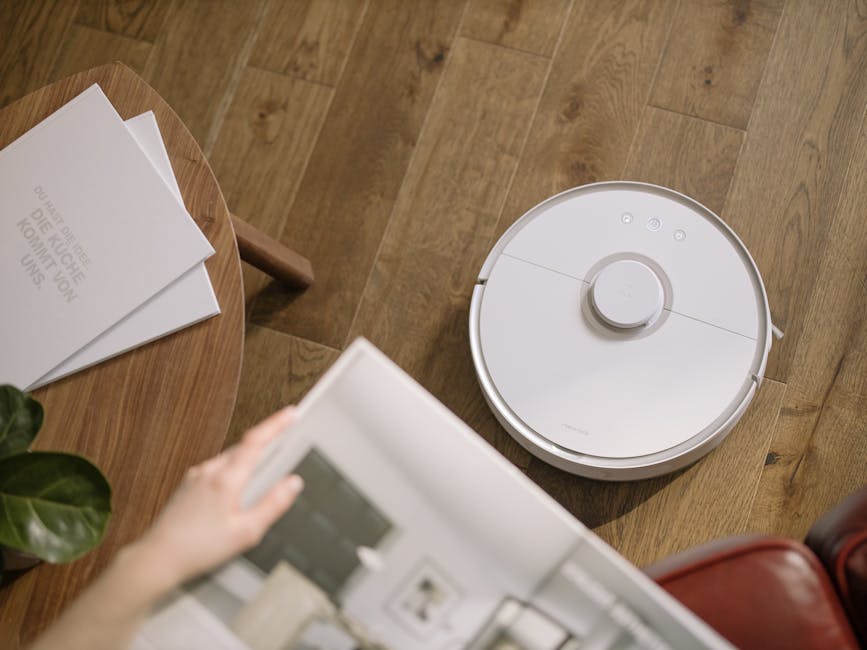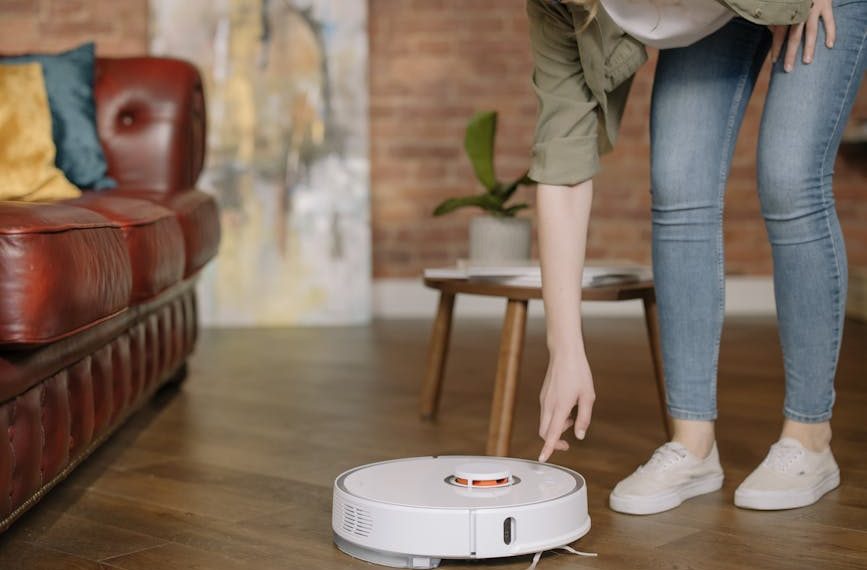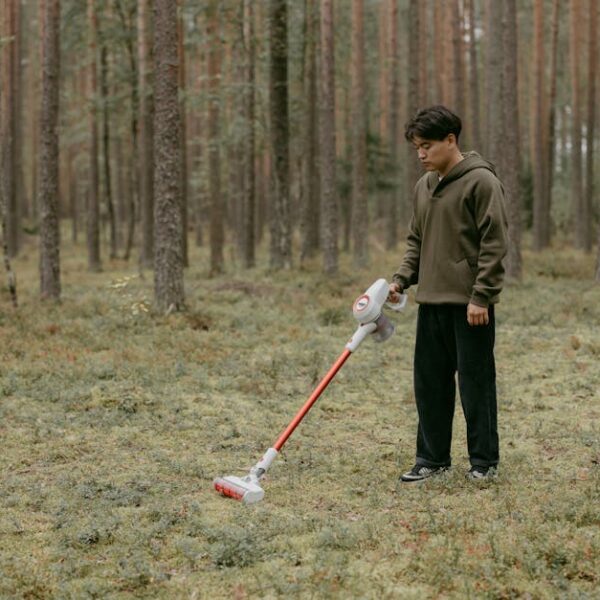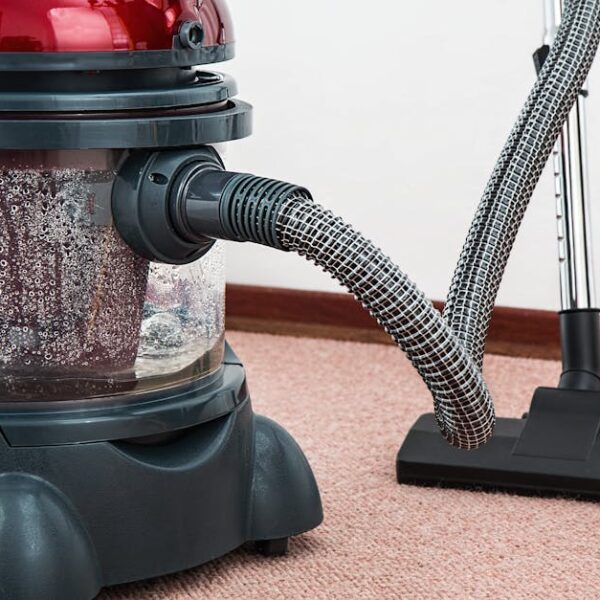You’ve come home from a long day, and the last thing you need is to deal with a rampaging vacuum cleaner that’s creating more noise than a drumming band. Your Roborock, usually a faithful, quiet companion in your cleaning routine, is now audibly unwell, causing your head to throb. We understand your situation, and we’re here to help you work through it.
Recognizing the Problem: Signs of a Noisy Roborock
Like any diligent cleaner, Roborock operates with a consistent hum of activity that’s noticeable but not disruptive. A tip-off that something might be amiss is when this hum transforms into something louder – or maybe even a roar. If you’re finding it tough to couch a quiet conversation over the purring of your Roborock, then it’s indeed time for a check-up.
Sharp listeners might discern changes in the device’s sound patterns. Clanging noises, sudden hisses, or occasional high-pitched whirring should be noted as they might indicate a potential issue.
An increase in noise may not always boil down to a technical fault. The common culprits for a noisy Roborock often include:
- Blockages restricting the vacuum’s cleaning path.
- Loose debris caught in its wheels or brushes.
- Components in the device worn down or dislodged from their proper place.
Understanding the Reasons: Why is your Roborock Noisy?
In our quest to silence your noisy Roborock, let’s explore its anatomy. Like any mechanical device, your robotic cleaner is not immune to the wear-and-tear of frequent use. Over time, various internal components could loosen or malfunction, creating the cacophony you’re hearing.
Reasons for elevated noise levels can vary from debris accumulation to loose components. A blockage in the cleaner’s path, food crumbs entangled in the wheels, or just an aged machine can lead to a sonic disturbance.
 Pro tip: Regular maintenance, such as wiping clean your device and freeing it from knotted laces or nestled rubber bands, can help you sidestep many of these noise-inducing issues.
Pro tip: Regular maintenance, such as wiping clean your device and freeing it from knotted laces or nestled rubber bands, can help you sidestep many of these noise-inducing issues.
Initial Troubleshooting: Quick Fixes for a Noisy Roborock
Before you call in the cavalry, it’s often possible to remedy minor issues yourself. Initial troubleshooting involves a keen eye and a basic understanding of your device.
An initial diagnosis can be conducted by examining:
- Obstructions: Ensure there’s nothing in the cleaner’s way, physically blocking its movement or cleaning passage.
- Cleanliness: Give the dustbin and filters a thorough cleaning. Trapped dirt can sometimes cause the motor to overwork, creating excessive noise.
- Main and Side Brushes: Inspect the main brush and side brush for entangled threads or hair that might hinder operation.
 Best practice: Always remember, safety first! Start by turning off the Roborock and disconnect it from any electrical source before you begin these troubleshooting measures.
Best practice: Always remember, safety first! Start by turning off the Roborock and disconnect it from any electrical source before you begin these troubleshooting measures.
Now, equipped with these initial steps, it’s time to retake command of your peaceful household. Let’s delve deeper, and we’ll walk you step-by-step through more detailed solutions to restore the harmonious hum of your Roborock.
Detailed Solutions: How to Fix a Noisy Roborock
When immediate DIY fixes don’t solve the problem, it’s time to get under the hood. Fortunately, most Roborocks are designed with user-friendly maintenance in mind. Here are some more detailed solutions for common issues:
- Brushes: Disassemble the brushes by turning them clockwise and gently pulling them out. Rinse them under warm water, let them dry completely before reattaching.
- Wheels: Check the wheels for any hair, string, or foreign objects that might be impeding its movement. If anything is found, remove it gently to avoid any damage.
- Filters: While routine cleaning may suffice for a while, after some time, you’ll need to replace the filter altogether. Fortunately, this is a straightforward process with most models including an easy-to-follow method in the user manual.
Precautionary Measures Vs Immediate Solutions
| Precautionary Measures | Immediate Solutions |
|---|---|
| Regular cleaning of the device | Checking for obstructions |
| Periodic checking of wheels and brushes | Thorough cleaning of dustbin and filters |
| Timely replacement of worn-out components | Inspecting and cleaning the main and side brushes |
Maintenance and Prevention: Avoiding a Noisy Roborock in the Future
The key to a silent and effective Roborock is consistent care and maintenance. Like any mechanical device, it appreciates a little TLC from time to time. Here’s an optimal maintenance schedule you might want to follow:
Weekly: Empty the dustbin regularly, wipe the sensors and make sure they’re clear from any gunk or dust.
Monthly: Give a thorough cleaning to the brushes and wheels. Keep an eye out for anything that might be lurking there.
Every 6 months: Plan a replacement schedule for your filter and brushes based on wear and tear.
 Pro tip: Utilizing the Roborock’s automatic troubleshooting feature can help identify issues that you might overlook and can help prevent them from becoming a major inconvenience. It’s a fantastic tool to enhance the longevity of your device.
Pro tip: Utilizing the Roborock’s automatic troubleshooting feature can help identify issues that you might overlook and can help prevent them from becoming a major inconvenience. It’s a fantastic tool to enhance the longevity of your device.
Remember, we all wish for a quiet, efficient Roborock whizzing around our home, happily doing its cleaning duties. With a bit of regular care, attention, and preventive maintenance, that’s exactly what you’ll get!
Key Takeaway:
- A noisy Roborock cleaner is usually an indicator of blockages, debris stuck in parts of the machine, or worn out components.
- Regular maintenance and proactive cleaning can prevent many noise-causing problems.
- Initial troubleshooting often resolves minor issues. This includes checking for visible obstructions, cleaning the dustbin and filters, and inspecting the brushes.
- If the problem persists, detailed solutions include removing and cleaning the brushes, cleaning the wheels, and replacing the filter.
- Regular cleaning and maintenance are key in preventing a noisy Roborock in the future.
Despite encountering issues with your Roborock cleaner, remember that every problem has a solution. By following the guidance mentioned above you can effectively rectify any noise issues and maintain your Roborock’s optimal function. Remember, your Roborock is an investment in clean floors and a tidy home. With proper care and maintenance, it will provide you with many years of service.
How Can Resetting My Roborock S5 or S6 Help Resolve Loud and Noisy Issues?
If your Roborock S5 or S6 is producing loud and annoying noises, knowing how to reset your roborock s5 and s6 can be a game changer. This simple process often resolves software glitches and restores optimal performance, allowing your vacuum to operate quietly and efficiently once again.
FAQs
Q: What causes my Roborock to be unusually loud?
A: Excessive noise can be caused by blockages, debris caught in wheels or brushes, or loose or worn components within your Roborock.
Q: What is normal operating noise level for a Roborock?
A: Typically, Roborock operates with a consistent, unobtrusive hum. If the noise level increases significantly, it might indicate a potential issue.
Q: How often should I clean my Roborock to prevent it from being noisy?
A: Conduct weekly cleaning of the dustbin and sensors, monthly cleaning of the brushes and wheels, and replace the filter and brushes every six months or as required.
Q: Can I fix a noisy Roborock by myself?
A: Yes, many minor issues causing noise can be diagnosed and resolved by implementing initial troubleshooting and maintenance measures as recommended.
Q: What automated features do Roborocks have to prevent noise issues?
A: Many Roborock models feature an automatic troubleshooting feature that can identify and prevent noise-causing issues.
We encourage you to share this article with others who may find it helpful. For more tips and solutions to common issues, check out our other posts!












